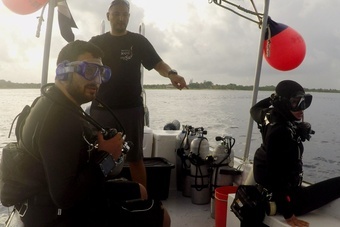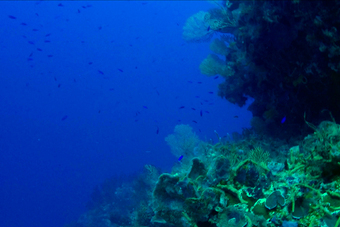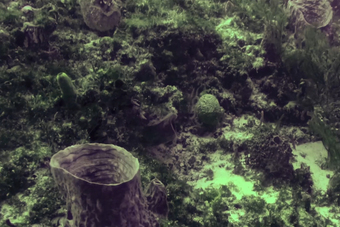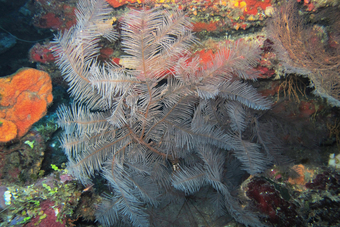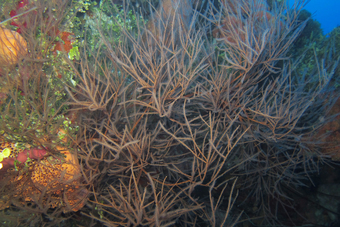Publications:
Gress and Andradi-Brown 2018
Black corals (Antipatharians) are crucial structural and ecological components of many mesophotic coral ecosystems (MCEs; reefs 30–150 m depth). In Mexico, black corals are harvested for the jewellery industry, which has historically led to population depletion. Harvesting began in the early 1960s and was concentrated around Cozumel Island until 1995. Since then, harvesting permits have been granted only for the mainland coast. Here we compare Cozumel populations between 1998 and 2016 for the two black coral species targeted by the jewellery industry. We found that densities of Plumapathes pennacea in 2016 were substantially lower than in 1998. However, the 2016 P. pennacea population has shifted to be dominated by larger colonies, suggesting disproportionate juvenile mortality or recruitment failure. Low numbers of Antipathes caribbeana were recorded, and no change in population density or colony size was detected between 1998 and 2016. Despite harvesting occurring for almost 70 years in the Mexican Caribbean, no information on reproduction, recruitment and other dynamics of the targeted species is available. We advocate for harvesting permits to be based on scientific evidence, and for implementation of future restrictions to prevent total depletion of black corals in the area.
55- 55 m
Mesophotic “mentions”
21 x (total of 6406 words)
Classification
* Presents original data
* Focused on 'mesophotic' depth range
* Focused on 'mesophotic coral ecosystem'
Fields
Community structure
Management and Conservation
Ecology
Focusgroups
Antipatharia (Black Corals)
Locations
Mexico - Caribbean Sea
Platforms
SCUBA (open-circuit or unspecified)



